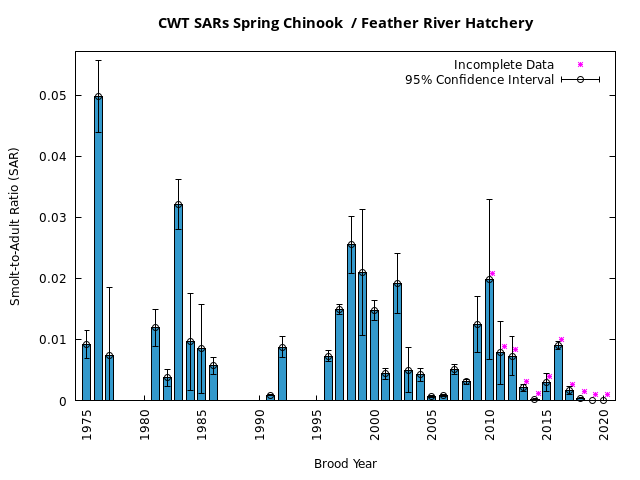Buchanan Lab
Focuses on statistical methods and mark-recapture tagging studies, primarily for salmonid stocks in the Columbia River Basin and California's Central Valley. Their research includes development of study designs, new statistical methods, analytical software, and statistical analysis and interpretation of life-cycle information.
Gosselin Lab
Focuses on applied ecological research and mechanistic modeling to examine processes underlying anadromous fish survival through large regulated rivers in the Columbia River Basin and Central Valley as well as the Pacific Ocean. Through modeling, field, and laboratory work, they integrate effects of habitat conditions and experiences on the population dynamics, physiology, behavior, and ultimately survival of the organisms over their life cycle.
Developing conservation strategies can be difficult for species with complex life cycles. Salmon migrating through a hydrosystem experience conditions that affect their survival within a life stage and across juvenile-to-adult life stages. With millions of individually tagged fishes over two decades in the Snake and Columbia rivers (Pacific Northwest, USA), we can track when fish pass through a hydrosystem, associate their passage timing with river conditions experienced, and ultimately know which juvenile fish survives in the ocean and returns to the river as an adult. In a study published in 2021, my co-authors and I applied a mark-recapture model with over 20 covariate effects on survival of ~400,000 wild Chinook salmon. We found that a sea surface temperature index had a strong negative relationship with ocean survival. We also found that juvenile fish length in the river had comparable and positive effects carrying over to ocean survival. Identifying freshwater-marine carryover effects on survival is information that can be useful for river management aimed at improving juvenile-to-adult survival.
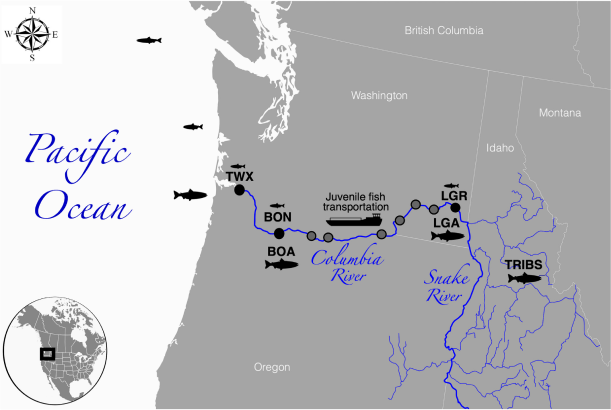
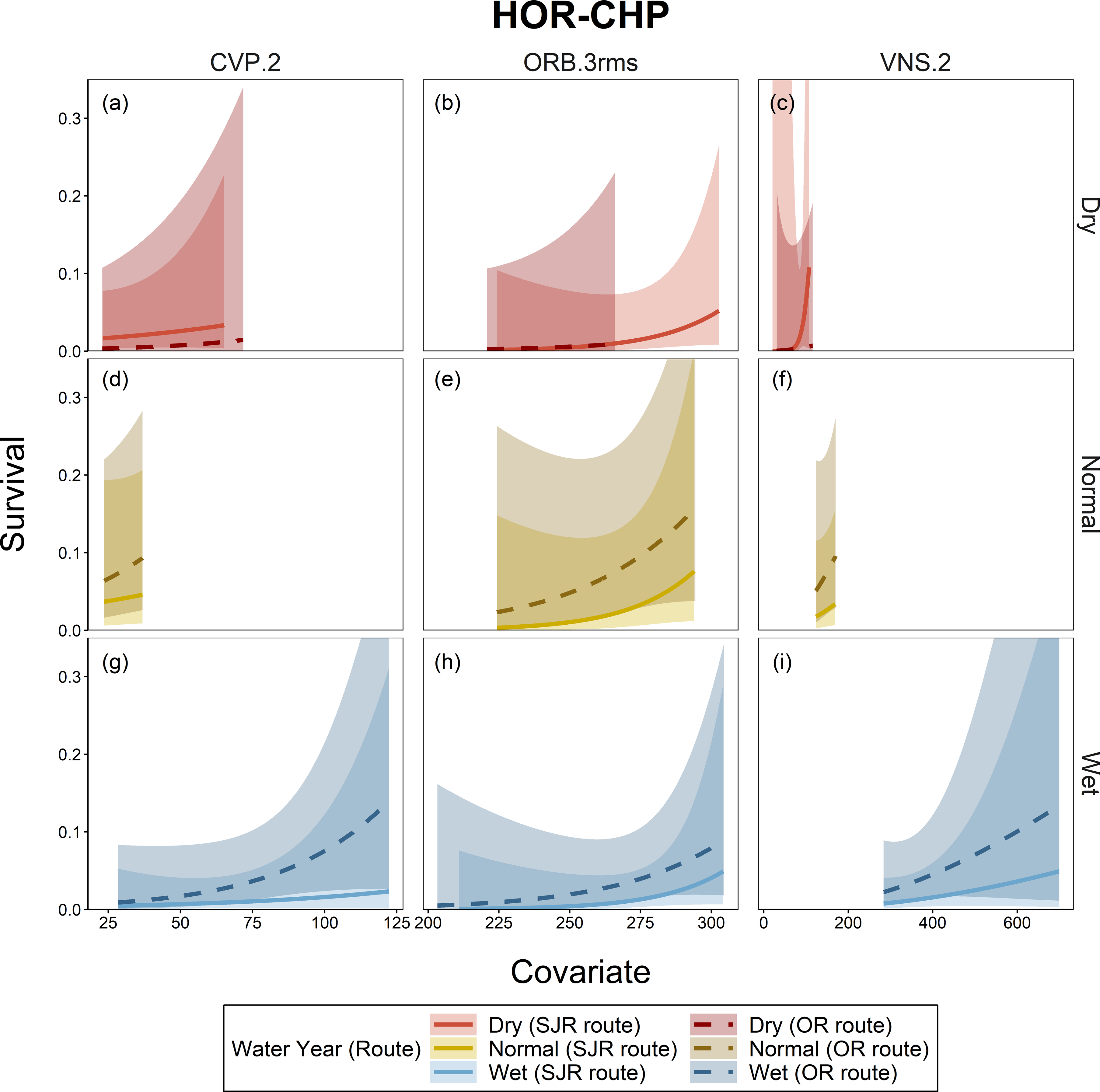
A major challenge of the Anthropocene is balancing the human need for natural resources with the needs of other organisms. In California's Central Valley, water extraction and land use changes in the Sacramento-San Joaquin River Delta put pressure on the estuarine community, including juvenile salmon and steelhead passing through on their migration to the San Francisco Bay and the Pacific Ocean. A decade of acoustic telemetry studies has documented alarmingly low survival of fall-run Chinook Salmon moving through the Delta from the San Joaquin River and focus has centered on water use patterns. However, efforts to improve survival via short-term changes to water project operations have had surprisingly little benefit for salmon coming from the San Joaquin River, although there is more potential benefit for threatened steelhead. The patterns of survival processes are localized throughout the Delta and can differ between species, indicating a need for a combination of management approaches to improve survival and protect these important fish populations.
One of the primary stressors on winter-run Chinook salmon in the Sacramento River is thermal stress during incubation. River managers allocate cool water releases from Shasta Reservoir to reduce this stress, but at the cost of limiting water releases at other times of the year. In our paper published in 2022, we modeled the effect of thermal stress on egg incubation and concluded that in drought years, targeting cold water to the period of peak embryo hatching yields the highest survival for a minimum use of water. The model, available online, allows resource managers and the public equal access to evaluate water operation plans and in real-time track the status of the endangered salmon in the Central Valley of California.
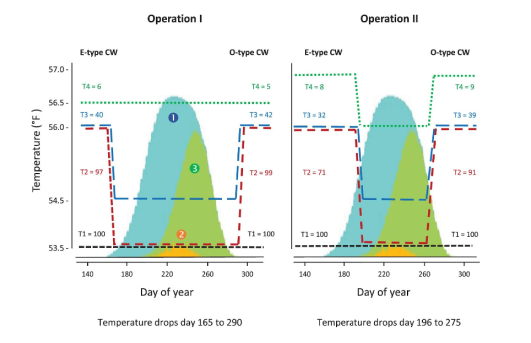
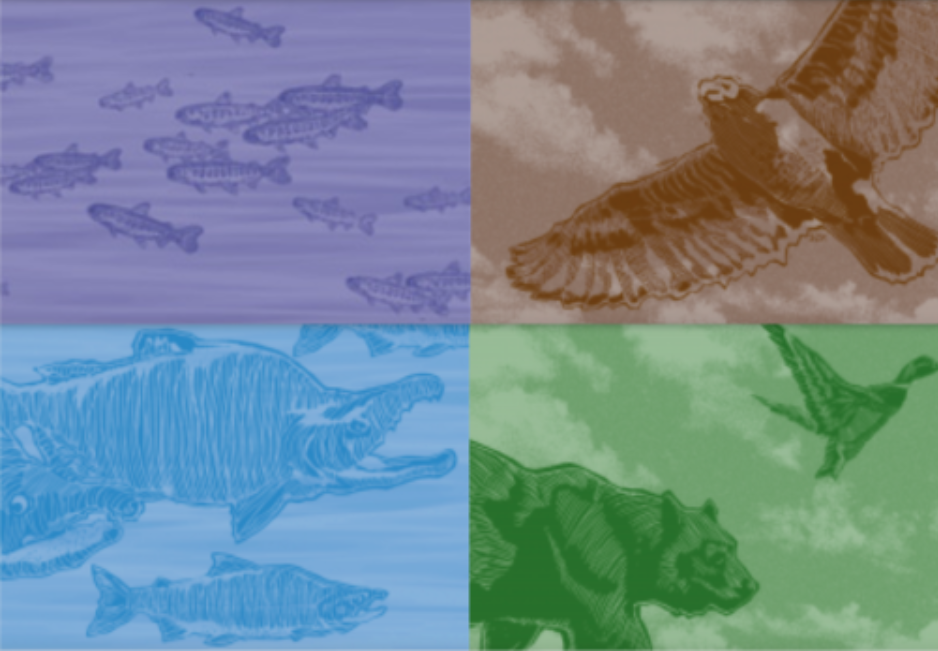
A wealth of information on animal survival and behavior is available from tagging and observing groups of individuals. Getting the most out of a tagging study requires careful study design and statistically rigorous data analysis. We provide consultation on the design and analysis of tagging studies to entities throughout the Columbia River Basin, focusing on salmon migration and dam passage studies using passive integrated transponder (PIT) tags, acoustic tags, and radio tags. We help researchers plan sample size, release strategies, layout of detection locations, and eventually data analysis. We also provide free statistical software that researchers can use independently to determine sample size, process tagging data, and extract key parameters such as survival and route selection probabilities. Most of our software is provided as desktop applications and we have recently added several R packages. YouTube videos are available for many packages, and we are also happy to provide more direct assistance. We aim to provide useful design and analysis tools and encourage researchers to contact us with their study needs.
Columbia Basin Research has been at the forefront of the Internet as a nexus for research in the fisheries science community since the 1990s and devotes much effort to the creation of freeware statistical analysis software that provides researchers and managers with myriad options to best analyze data. As our users have changed over the last three decades, so too have the ways they engage in learning how to use our apps. As such, we create training videos for our analysis tools that allow users to follow along as we go through how to maximize their use. Along with our push into more modern approaches to utilizing these tools (R versions, more robust GUIs, etc.), our videos help the next generation of scientists and wildlife managers to firmly grasp our analysis applications and assure we'll remain at the forefront of shared science within the community beyond the next three decades.
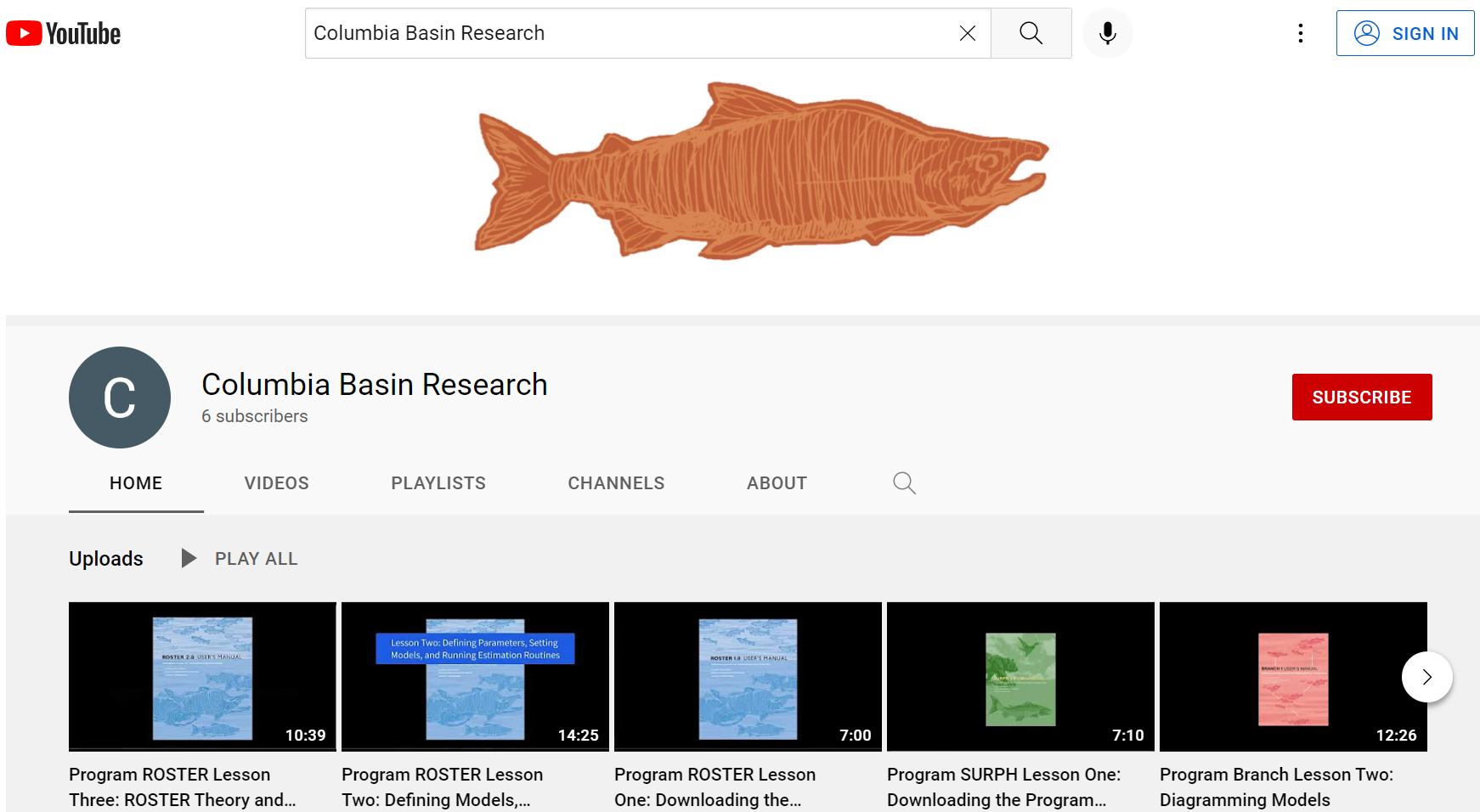
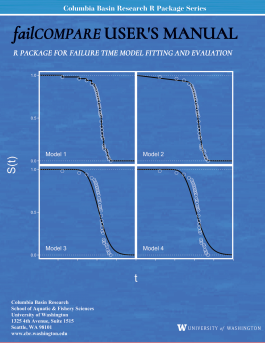
Acoustic telemetry is a powerful technology for studying the movement and survival of fish, however, it is sometimes necessary to correct for the premature failure of a portion of tags to obtain accurate estimates. So called "tag-life corrections" may be performed by withholding a random subset of tags to be used in a study, activating and continually monitoring the tags until they fail, and then fitting a model based on those data. The choice of which failure-time model to use can be daunting. To help deal with this challenge, we developed failCompare, a software package for the statistical analysis platform R, which allows users to easily visualize and compare nine alternative failure-time models.
Management operations on the Columbia and Snake rivers provide many services to various communities, including power generation, flood management, and mitigative protection for water quality, wildlife, and endangered salmon. The challenge is to make scientifically-sound decisions in a complex system where variable environmental conditions, management actions and biological responses cannot be isolated from each other. To this end, there is a need for understanding trade-offs among possible actions by studying the past and modeling the future under variable environmental conditions and climate change. For example, spilling water over dams has mixed effects. It is beneficial for helping juvenile fish migrate safely past dams yet also increases the amount of total dissolved gas (TDG) in the water which, at elevated levels, is known to be harmful to salmon. We have developed a tool to: examine historic river conditions, including TDG; visualize spill-influenced trade-offs between fish passage and TDG; and forecast TDG based on environmental conditions and operations. Making informed decisions is essential for assessing ecological impacts and balancing the multiple needs of the region.
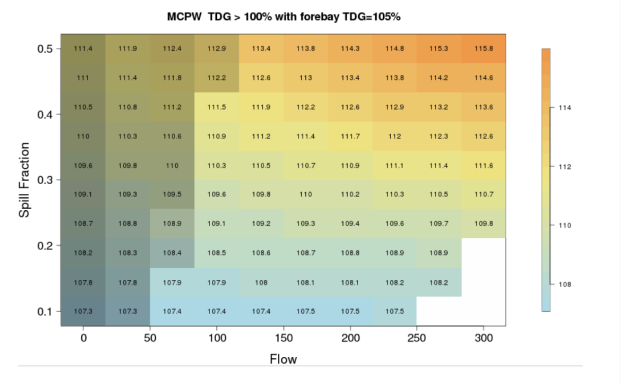
Resource management in the Central Valley of California, with a goal of preserving salmonid populations, requires continued monitoring to help assess the effectiveness of various actions. To help track fish, estimate SARs, and provide a measure of a hatchery program's success, millions of hatchery fish are tagged with CWTs. These tagging, release, and recovery programs started in the mid-1970s allowing for estimates of standardized, long-term trends in SARs and adult returns. Annual updates for continued evaluations can be accessed through the Online Analytical Processing (OLAP) tool that we developed. The online tool calculates the SARs for all the salmonid CWT releases from the Central Valley's hatchery programs, with release and recovery from Regional Mark Information System. The recovery data are processed to provide numerical expansions for each CWT recovery in order to estimate the number of returning adults represented by each tag (Skalski and Townsend 2005).
Skalski J.R., and R.L. Townsend. 2005. Pacific Northwest Hatcheries Smolt-to-Adult Ratio (SAR) Estimation using Coded Wire Tags (CWT) Data. Technical Report to Bonneville Power Administration, Project No. 1991-051-00, Contract No. 00013690.


